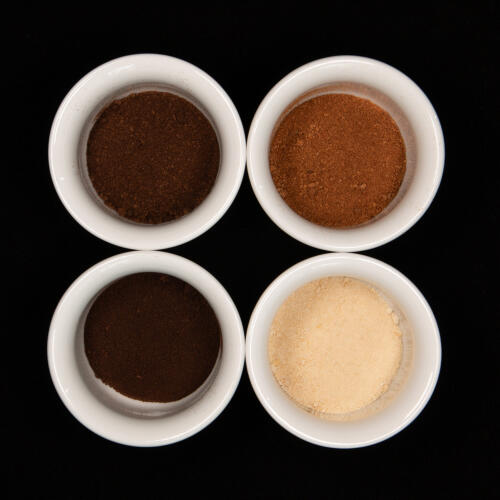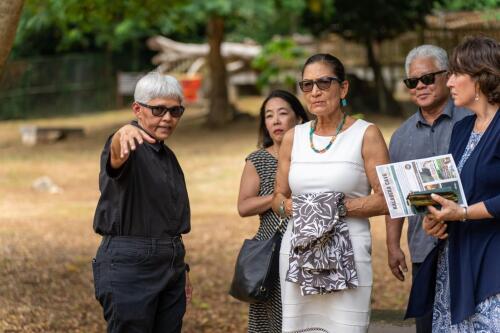ecosystem
Two years after the scientists in Finland successfully made coffee in a laboratory, VTT Technical Research Center of Finland Ltd has released detailed information on the process. Published in the Journal of Agriculture and Food Chemistry, the scientific paper describes the exact process the scientists used to produce coffee starting from the original coffee plant itself, and establishing cell cultures to alter its aroma in the roasting process, caffeine content, flavor analysis, and sensory profiling by a panel of tasters. While demand for coffee is rising, the production of coffee beans faces multiple sustainability challenges, concerning land and water use, laborers’ rights, and climate change. According to the Center for the Promotion of Imports, Europe, the highest consumer of coffee in the world, imported over 3,602 thousand tons (3.6 million tons) of green coffee in 2021, with an estimated average of 5 kg of coffee consumed per pe...
In devasting cases dotting the globe in recent years, climate warming has led to an increase in the number and severity of destructive wildfires. Climate change projections indicate that environmental and economic damage from wildfires will spread and escalate in the years ahead. While studies have analyzed impacts on land, new research from the University of California San Diego and other institutions indicates that aquatic ecosystems are also undergoing rapid changes as a result of wildfires. Led by School of Biological Sciences Professor Jonathan Shurin’s laboratory, the researchers compared how aquatic systems change with the input of burnt plant matter, including effects on food webs. Their results are featured in two research studies published in the journal Global Change Biology. Among the findings emerging from the research, scientists show that fire chemically transforms plant debris and changes the role of aquatic ecosystems as key pla...
Assistant Secretary for Insular and International Affairs Carmen G. Cantor concluded a weeklong trip to the Pacific, where she met with regional leaders and U.S. government interagency partners to highlight the Department of the Interior’s commitment to the insular areas and Freely Associated States (FAS). In Honolulu, Hawaiʻi, Assistant Secretary Cantor and staff from the Department’s Office of Insular Affairs (OIA) hosted interagency partners and U.S. Embassies Chiefs of Mission at the biannual Federal Working Group on the FAS. The meeting facilitated the exchange of best practices, addressed program delivery challenges and discussed pooling federal resources for crucial projects. Over 35 federal program personnel from 20 agencies attended. Traveling to Guam, Assistant Secretary Cantor met with Lieutenant Governor Josh Tenorio, engaged local leaders, and conducted site visits to key projects receiving funding from OIA. These visits i...
On a cool, fall evening on Lake Tahoe, researcher Sudeep Chandra stands at the back of a small boat anchored in the south end of the clear blue lake. He’s holding a device called a dredge, which looks like a large metal clamshell. “So, we’re basically going to drop this in the water,” Chandra says as he lightly tosses the dredge into the glassy lake and watches it sink to the bottom. A few seconds later, after the device snaps shut and scoops up a sample of the lakebed, Chandra reels it in and cracks it open into a shallow bucket. “We first see, of course, invasive Asian clams,” Chandra says, plucking a small shell from a pile of sediment. “These things can live two to four years old, and they can reproduce hundreds of thousands to millions of little villagers or tiny clams that go spread around the lake.” Asian clams are an invasive species that showed up in Tahoe more than 20 years ago. They give of...
Rivers are awash with excess nutrients, chemicals, and other pollutants, including sewage. Globally, roughly 50% of wastewater is treated at facilities before being released into nearby bodies of water. But new research shows that even advanced treatment might not be enough to safeguard the health of freshwater ecosystems. Researchers released dilute, treated wastewater into an unpolluted stream in northern Spain and made a before and after comparison of energy flows through the ecosystem. “We found subtle yet fundamental shifts in ecosystem function.” “We found subtle yet fundamental shifts in ecosystem function after adding wastewater,” said Ioar de Guzman, a freshwater ecologist at the University of the Basque Country in Spain and lead author of the study. By manipulating a pristine ecosystem, she and her colleagues could isolate the effects of wastewater, which can be masked in streams that contain other types of...




